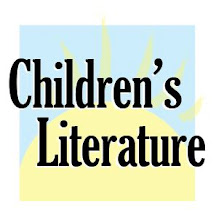I Have a Little Dreidel
Maxie Baum
Illustrated by Julie Paschkis
(Scholastic, 2006)
Great illustrations highlight the traditional song with added lyrics. Kids can help with the chorus.
Our Eight Nights of Hanukkah
Michael Rosen
Illustrated by Anne DiSalovo-Ryan
(Holiday House, 2000)
A child describes the night-by-night events of his family's holiday.
Hanukkah Haiku
Harriet Ziefert
Illustrated by Karla Gudeon
(Blue Apple Books, 2008)
Interesting, different approach to telling the holiday story in Haiku form. Pages open to reveal a different lit candle for each night.
Lots of Latkes: A Hanukkah Story
Sandy Lanton
Illustrated by Vicki Jo Redenbaugh
(Kar Ben, 2003)
This has a nice old tale feel to it. A shtetl community comes together to celebrate the holiday. Everyone is supposed to bring one item for the holiday meal, but they all end up bringing latkes.
In the Month of Kislev: A Story for Hanukkah
Nina Jaffe
Illustrated by Louis August
This is the traditional story of paying the miserly baker for the smells of his cakes with the sound of coins. It's a little wordy, but it's a really good story.
The Hanukkah Mice
Steven Kroll
Illustrated by Michelle Shapiro
(Marshall Kavendish, 2008)
A little girl's celebration is duplicated by the mouse family living in her doll house.
Mrs. Greenberg's Messy Hanukkah
Linda Glazer
Illustrated by Nancy Cole
(Albert Whitman, 2004)
When Rachel makes latkes with her neighbor, Mrs. Greenberg, the cooking experience becomes messy fun.
My Two Holidays
Danielle Novack
Illustrated by Phyllis Harris
(Scholastic, 2010)
This really is a nice attempt to deal with the situation of dual holidays that so many families now have.
Just Enough is Plenty
Barbara Goldin
This is an Elijah tale for Hanukkah. Actually, I'd recommend anything by Barbara Goldin. She is a storyteller and has a storyteller's ear for how the story should flow.
Barbara Goldin
Illustrated by Avi Katz
A story about how the gift itself doesn't matter; it's getting the right gift for the right person that counts.
Trees of the Dancing Goats
Patricia Palocco
(Simon and Schuster, 1996)
A Jewish family in Michigan helps to make Christmas special for sick neighbors creating their own Christmas miracle.












